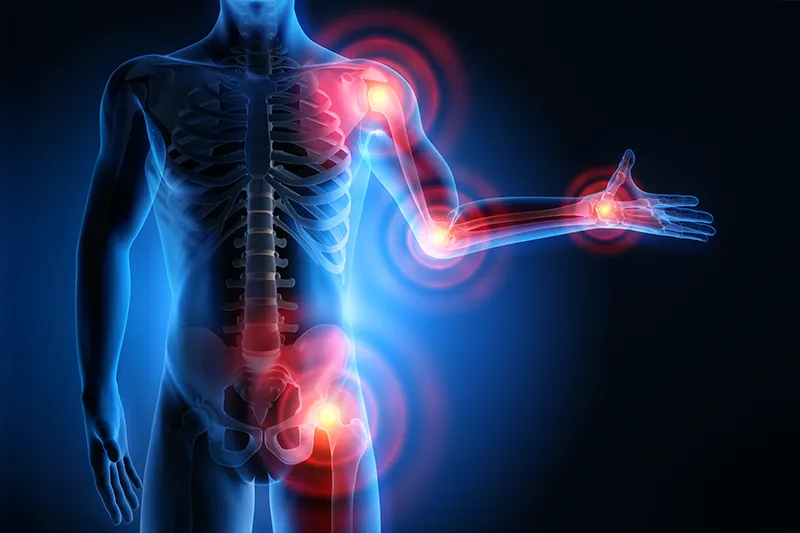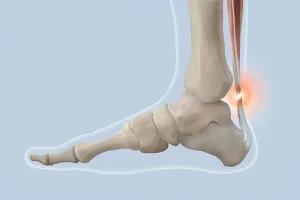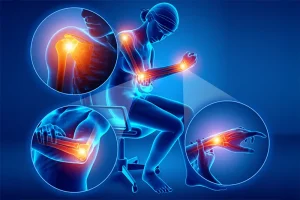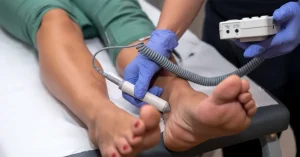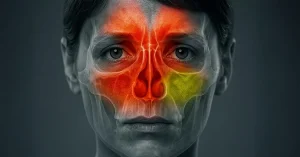If you feel pain in multiple bones and joints, regardless of the time of day or your level of activity, it is important to know that this type of discomfort should not be ignored. These pains can sometimes indicate serious musculoskeletal conditions or general underlying causes that need proper evaluation.
This article explains what may cause widespread bone and joint pain, how to recognize the signs early, and when to see an orthopedic doctor for a full assessment.
What Is Generalized Bone And Joint Pain?
Pain that affects multiple joints or body areas is often called diffuse musculoskeletal pain. It can appear in different forms, such as:
- Pain in several joints at the same time (knees, hips, shoulders, fingers);
- Combined with muscle pain;
- Accompanied by stiffness or reduced mobility;
- A feeling of overall fatigue or weakness.
If the pain persists, recurs, or is associated with other symptoms, investigating the root cause is essential.
The Most Common Causes Of Generalized Pain
1. Arthrosis (Osteoarthritis)
This is one of the most frequent causes of widespread joint pain, especially after age 50.
Typical signs:
- Intense pain in the morning or after rest;
- Joint stiffness;
- Grinding or popping noises when moving;
- Gradual loss of mobility.
Most affected areas:
- Knees;
- Hips;
- Shoulders;
- Hands and finger joints.
2. Rheumatoid Arthritis
An autoimmune disease that affects multiple joints, often on both sides of the body.
Signs to watch for:
- Swollen, red joints;
- Prolonged morning stiffness (more than 30 minutes);
- Constant pain that does not improve with rest;
- Fatigue and unintended weight loss.
3. Fibromyalgia
Common in women, fibromyalgia causes widespread body pain without clear inflammation.
Accompanying signs:
- Sleep problems;
- Constant tiredness;
- Difficulty concentrating (“mental fog”);
- Pain that worsens with stress or lack of rest.
4. Vitamin D Or Calcium Deficiency
A lack of vitamin D can lead to bone and muscle pain even when there is no inflammation.
Additional symptoms:
- Weak muscles;
- Cramps;
- Fragile bones.
5. Viral Or Bacterial Infections
Certain infections, such as influenza, Lyme disease, or other post-viral conditions, can trigger generalized joint pain.
Common signs:
- Sudden pain with fever or chills;
- Muscle aches;
- Pain that resolves on its own within days or weeks.
6. Endocrine Or Metabolic Diseases
Conditions like hypothyroidism, diabetes, or gout can cause diffuse joint and muscle pain.
When Should You See Your Doctor?
Not all pains are emergencies, but you should see an orthopedic specialist or rheumatologist if:
- Pain lasts longer than 2–3 weeks;
- Pain wakes you up at night;
- Joints are swollen, warm, or red;
- Morning stiffness lasts more than 30 minutes;
- You have other symptoms such as fatigue, fever, or weight loss.
What Investigations Are Recommended?
To find the exact cause, your doctor may recommend:
- Blood tests (for inflammation, autoimmune markers, vitamin D, calcium);
- X-rays or MRI scans to assess joint damage;
- Musculoskeletal ultrasound;
- Functional tests to check mobility.
How Can VenArt Clinic Help You?
If you have persistent bone and joint pain, VenArt Clinic’s orthopedic specialists can provide an accurate diagnosis and an individualized treatment plan. We treat a wide range of conditions, from local inflammation to complex degenerative diseases and trauma.
Some of the most common conditions we treat include:
Hand and wrist:
- Dupuytren’s Contracture: Tightening of the skin and difficulty stretching the fingers due to thickened tissue. Surgery releases the tendons.
- Trigger Finger: Locking of a finger in a bent position, often with pain and a clicking sensation. A simple procedure frees the tendon.
- De Quervain’s Tenosynovitis: Pain at the base of the thumb indicates inflamed tendon sheaths. A quick procedure restores function.
- Rizarthrosis: Arthritis of the thumb base joint causing pain during pinching or twisting. Treatments can be conservative or surgical.
- Carpal Tunnel Syndrome: Numbness, tingling, and weakness in the hand, especially at night, are common signs. Treated with a procedure to release the median nerve.
- Ulnar Nerve Compression: Burning or loss of feeling along the inner side of the hand. Managed individually with conservative or surgical solutions.
- Synovectomy: Removal of the inflamed synovial membrane for chronic joint inflammation that does not respond to other treatments.
Shoulder:
- Rotator Cuff Injuries: Pain when lifting the arm, weakness, or locked movement may indicate a torn tendon. Treated minimally invasively by arthroscopy;
- Total Shoulder Replacement: Used for severe arthritis or complex trauma to replace the damaged joint with a customized prosthesis;
- Acromioclavicular Dislocation: Pain at the top of the shoulder when straining or lifting. May need surgical realignment.
Knee:
- Knee Arthroscopy: Recommended for meniscus tears, instability, or chronic inflammation. A quick procedure with a fast recovery;
- Total Knee Replacement: For advanced arthritis, the damaged joint is replaced with a modern prosthesis, restoring movement and reducing pain;
- Hallux Valgus (Bunions): A bony bump at the base of the big toe causes pain, redness, and walking difficulty. Surgical correction realigns the toe.
Want A Complete Joint Pain Evaluation?
If your pain persists, we welcome you to VenArt Clinic in Cluj-Napoca. Our orthopedic team will help identify the cause and offer a personalized treatment plan to restore your mobility and comfort.
Schedule a consultation at VenArt Clinic today and take the first step toward living pain-free.

